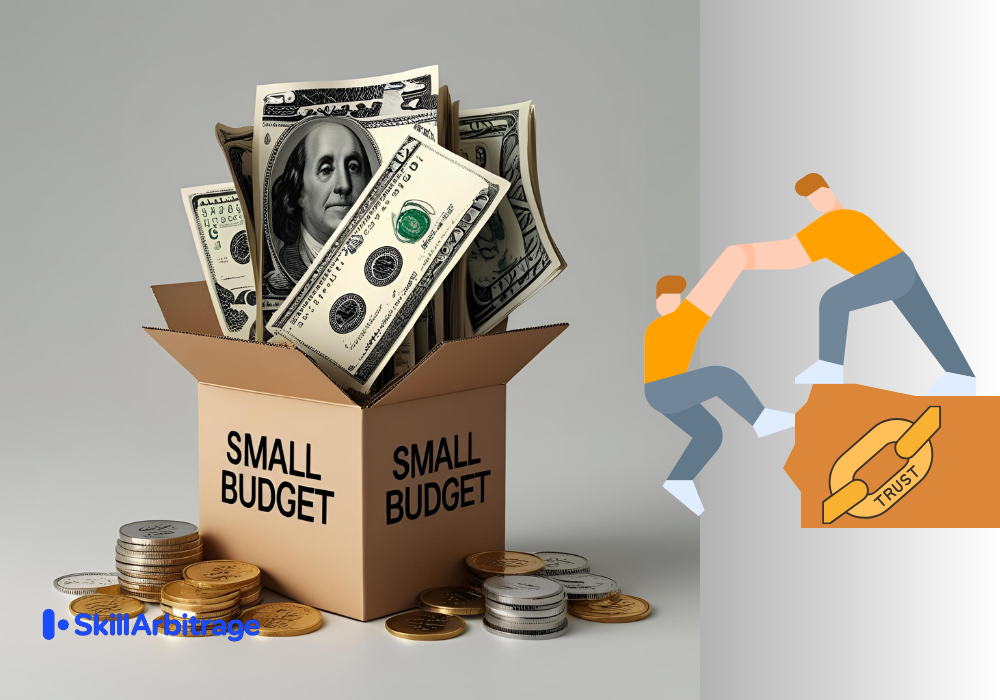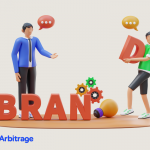This blog is a practical guide to building trust and driving better conversions with authority bias. It will be particularly helpful for content writers, marketers, and small business owners who want to establish trust in new brands with limited budgets.
Table of Contents
Why people won’t trust your brand (until they see someone else does first)
“Of course, I have my account on LinkedIn, but it does not work. There are no responses.” An ex-colleague complained over the phone. He was trying to make it in the big, bad world of freelancing, but the potential clients simply eluded him. He asked me to take a look at his LinkedIn profile, and I saw the problem at once.
His profile simply said what he was looking for. The description was simple: “Experienced content writer looking for freelance work”. But there was no mention of how many clients he had handled or what certifications he had, there was nothing to build credibility.
Something similar often happens to small brands with tiny ad budgets. And it can be very disheartening as a business owner or freelancer. You know that feeling when you put your heart into creating something amazing, but people just… don’t seem to trust you yet?
Yeah, I get it. And here’s the thing – it’s not personal. It’s just how our brains work.
What’s really going on in your customer’s head
Picture this: You’re scrolling through Instagram and see two ads for acne cream. The first one is from a brand you’ve heard of – maybe you’ve seen their billboards around the city. The second is from some random brand you’ve never encountered.
Which one are you more likely to trust?
If you’re like most people, you probably went with the first one without even thinking about it. That’s not because you’re shallow or lazy – it’s because your brain is actually being pretty smart here.
This whole thing has a name: authority bias. Sounds fancy, but it’s really just your brain taking a shortcut.
Instead of researching every single product from scratch (who has time for that?), your brain looks for clues that other smart people have already done the homework. It’s like asking your friend, “Hey, have you tried this restaurant?” instead of reading every single review online.
Our brains crave safety and social proof.
When your product or service looks unfamiliar, the brain panics:
- “Who else trusts this?”
- “Has this been verified?”
- “Will I be scammed?”
But show even one strong cue of authority — a badge, a headline, a quote from a respected name — and the brain relaxes.
“Okay, looks legit. Let’s go.”
Authority is not about bragging. It’s about reducing perceived risk.
Your brain isn’t being lazy – it’s being efficient. And as someone trying to build a business, you need to work with this tendency, not against it.
Authority bias in the Indian context
Here’s where it gets really interesting for us. In India, we’re dealing with a pretty noisy marketplace. Your potential customers are constantly wondering:
- “Is this legit or just another scam?”
- “Who else has actually bought this?”
- “Why should I trust this person over the other 50 options I saw today?”
But the moment they spot a credible logo, an award, a media mention, or even a quote from someone they recognize – their guard comes down a little. You’re not being boastful when you show these things. You’re actually doing your audience a favor by giving their brain something to latch onto.
And honestly? In our culture, credentials still carry serious weight. A degree from a good college, getting featured in the news, having recognizable company logos on your client list – these things matter more here than they might elsewhere.
Indian brands using authority bias
Let me show you some brands that have figured this out and are using it brilliantly:
The Shark Tank effect
You must have noticed how every brand that’s been on Shark Tank India suddenly becomes more trustworthy. That’s not an accident. When you see “As seen on Shark Tank” or “Backed by Aman Gupta,” your brain immediately goes, “Okay, real investors put real money into this. It’s probably not a scam.”
Mamaearth‘s certification game
Walk into any store and look at Mamaearth products. They’re covered in badges – “FDA Certified,” “Made Safe Approved,” and “Clinically Tested.” In a world of conscious and careful parents, these certifications do the heavy lifting for the brand.
MBA chaiwala’s journey
This guy built an entire personal brand around the underdog story, but what really sealed the deal was the credibility he stacked up – TEDx talks, Forbes features, speaking at IIMs. It’s not just the story; it’s the proof that important people took notice of the story.
Any brand, the biggest, smallest, and everything in between, can harness this power by following a straightforward path.
How to make authority bias work for you (even if you are just starting out)
You might be thinking, “I don’t have Forbes features or Shark Tank investors. What am I supposed to do?” Relax! Authority isn’t just for celebrities. Think of it like building a stack of credibility, one layer at a time:
Layer 1: Get some official backing
Start with certifications or credentials that show you know what you’re doing:
- “Google Ads Certified”
- “HubSpot Content Marketing Certified”
- “Graduated from XYZ College”
These might seem basic, but they’re your foundation. There are many free and excellent certification courses available.
Layer 2: Let your clients do the talking
Nothing beats having other people say you’re good at what you do. Share these consistently on your profile.
- Screenshots of client messages
- Case studies with real results
- Logos of companies you’ve worked with (even if they were small projects)
Layer 3: Get noticed by someone with an audience
Try to get a small collab with a more popular influencer or brand on Instagram.
Even small mentions count:
- “Featured on local podcast”
- “Guest post on industry blog”
- “Reposted by [someone with a decent following]”
Layer 4: Show up consistently
This one’s underrated, but showing up regularly makes people assume you’re legit:
- Weekly newsletter
- Regular LinkedIn posts
- A blog that you actually update
Here’s the thing – you don’t need all four layers to start seeing results. Even having 2-3 solid credibility cues can help you charge ₹30K for work that others are offering for ₹5K.
The best place for authority
This is crucial: authority only works when you put it where people have doubts about you.
Don’t just throw all your credentials at the bottom of your website and call it a day. Be strategic about it and display them:
Let me show you the difference this makes. Imagine a LinkedIn bio:
Before: “I’m a freelance HR consultant.”
After: “I’ve helped 70+ Indians land remote jobs at US startups – featured in Business Insider for my placement success rate.”
Which do you think builds greater credibility?
Ready-to-use lines you can steal to boost credibility
Need some inspiration? Here are some plug-and-play templates:
The Media Mention: “Featured on Josh Talks, Brut India & The Better India.”
The Certification Flex: “Meta Certified Digital Marketing Associate | HubSpot SEO Specialist”
The Client Trust Builder: “Worked with 20+ Indian startups including [recognizable names].”
The Results Line: “Helped 18 solopreneurs land US clients worth ₹70K/month on average.”
The Speaking Gig: “Speaker at Nasscom’s Freelance India Summit 2024.”
Here’s a snapshot of how authority bias influences conversion rates.
The bottom line
This is what I explained to my friend, of course at a much lesser length. I told him, “ In Indian markets, people are skeptical by default. That’s not a bad thing – it’s actually smart of them, given how much noise is out there. Your job isn’t to be the loudest or the cleverest. Your job is to be credible.”
This is true for both freelancers and small brands out there. You don’t need to be famous. You just need to show proof that someone credible thinks you’re worth paying attention to.
When you do this right, authority removes hesitation. It shifts the entire conversation from “Why should I hire you?” to “How soon can we start?”
And honestly? That’s exactly where you want the conversation to be.
FAQs
Q1. What if I don’t have big credentials or media features yet?
Start with what you do have — testimonials, portfolio links, social content, and small wins. Authority builds gradually. Start stacking.
Q2. Can I use authority bias in cold emails?
Absolutely. Lead with the strongest cue.
Example: “I’ve written for 3 Shark Tank-backed startups. I’d love to help [company] do XYZ.”
Q3. Will Indian clients care about foreign certifications?
Yes — especially if they’re global clients. HubSpot, Google, Meta — these hold weight. Mention them.
Q4. How do I showcase authority without sounding arrogant?
Make it about your results, not your resume. Use data. Use quotes. Let your clients do the bragging.
Q5. Does authority work better than emotional copy?
They’re not opposites. Authority opens the door. Emotion invites them in. Use both strategically.







 Allow notifications
Allow notifications
